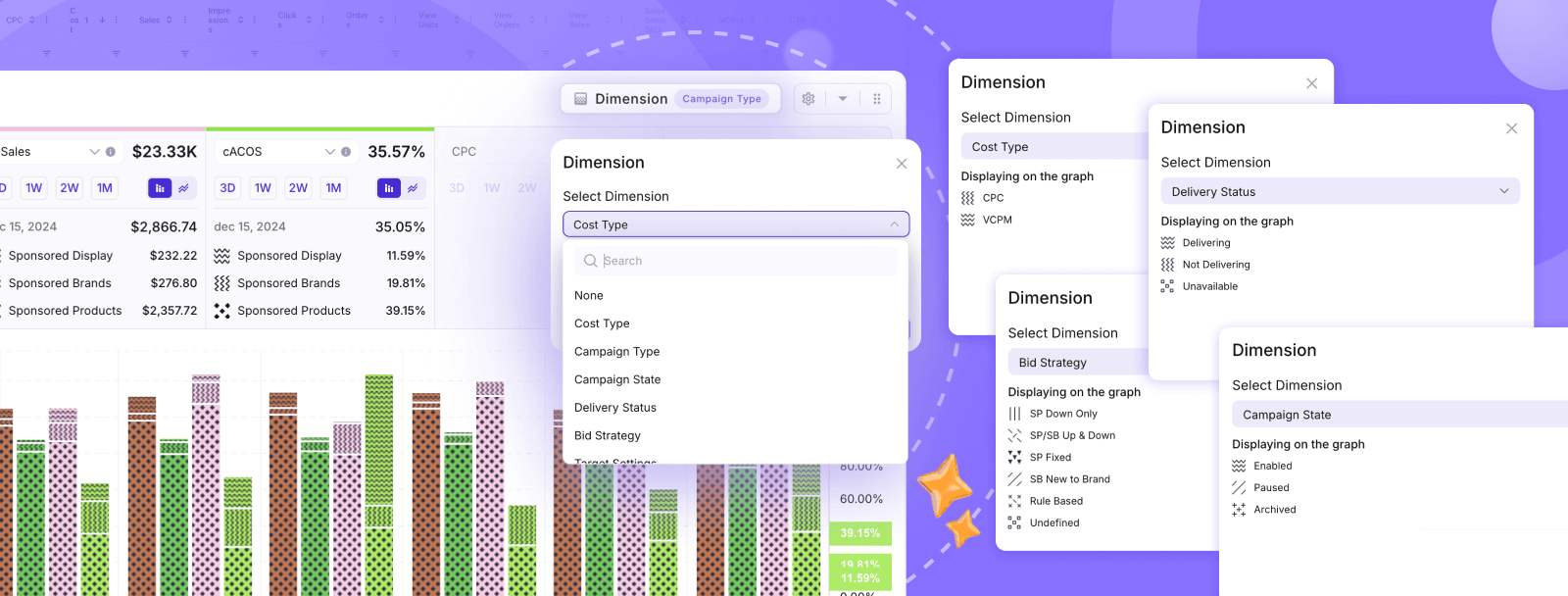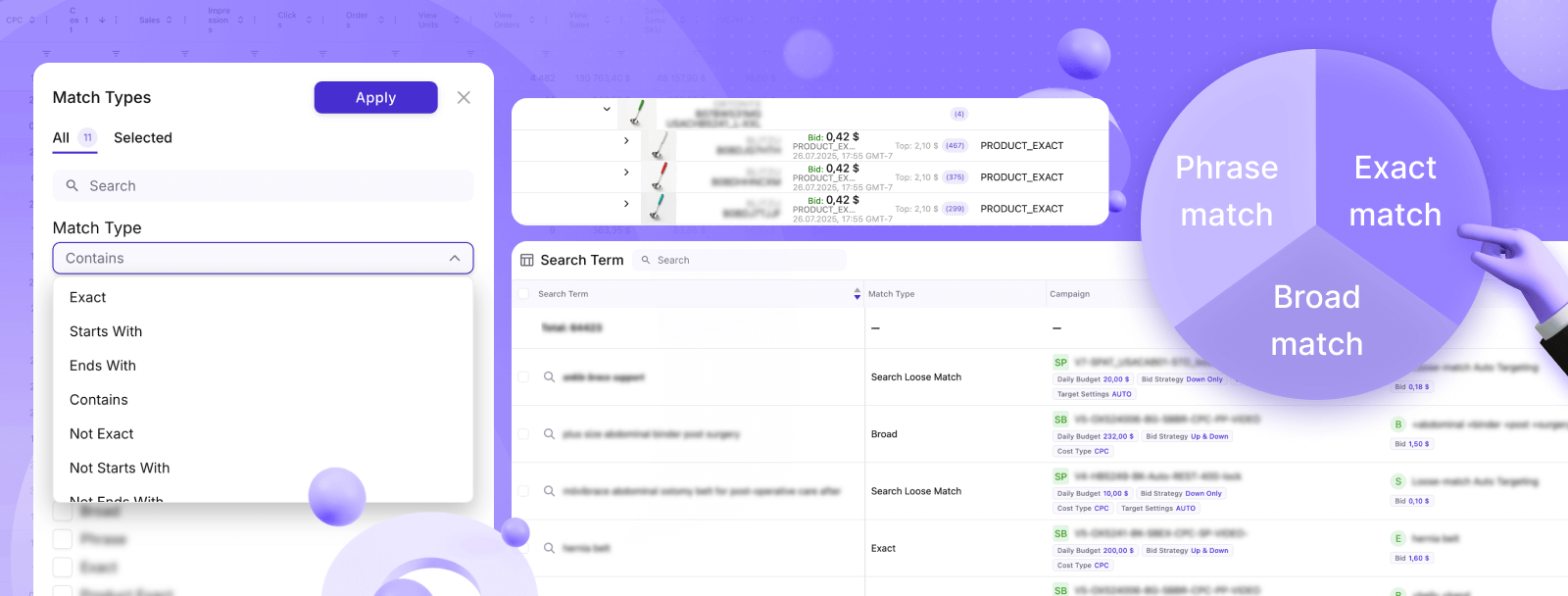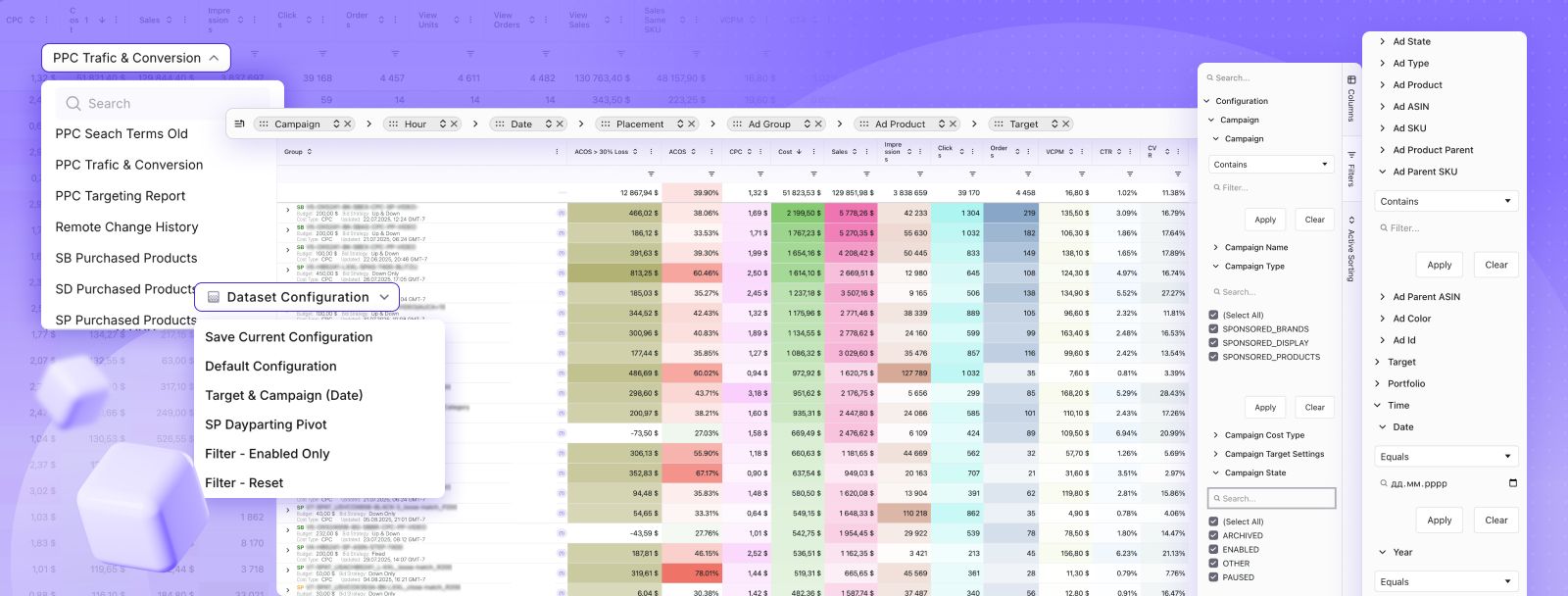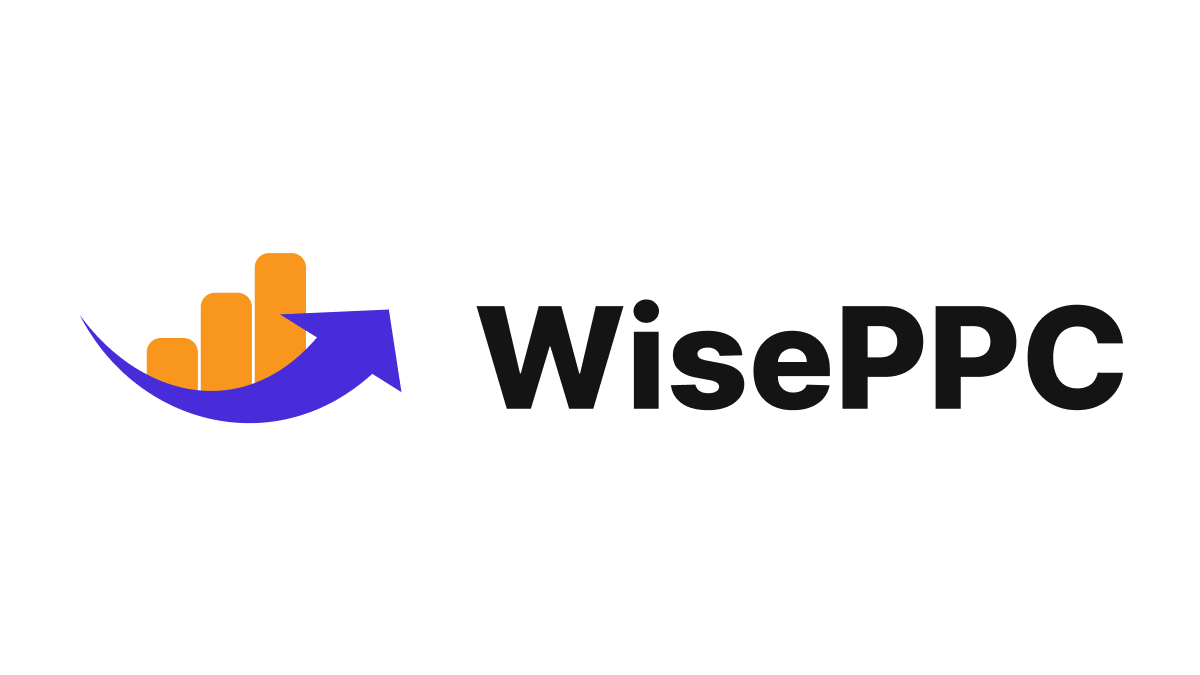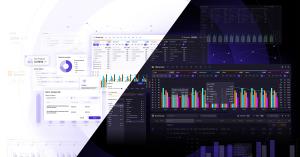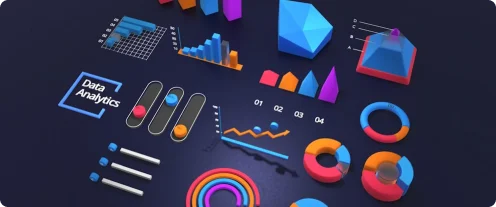Introduction
While most Amazon advertisers obsess over keywords, smart sellers know that product targeting often delivers better results with less competition. But here’s the catch: Amazon’s reporting makes it nearly impossible to optimize product targeting effectively. You can see basic metrics, but not the intelligence needed to build a winning strategy.
WisePPC’s Product Targeting Insights transforms ASIN-level data into strategic intelligence, revealing which products to target, when to target them, and how to structure campaigns for maximum impact.
The Hidden Goldmine of Product Targeting
Product targeting represents one of Amazon’s most underutilized opportunities:
- Lower competition than popular keywords
- Higher buyer intent (shoppers comparing specific products)
- Better profit margins (precise targeting reduces waste)
- Strategic positioning opportunities
Yet most advertisers barely scratch the surface because Amazon’s reports don’t reveal:
- Hierarchical performance (ASIN → Parent → Brand)
- Competitive vs complementary patterns
- Placement effectiveness by target type
- Category-level insights
Hierarchical Product Analysis: See the Full Picture
The Three Levels of Product Intelligence
1. Target ASIN Level
Individual product performance seems straightforward until you realize:
- Child ASINs often behave differently than parents
- Variations can have wildly different conversion rates
- Seasonal items show temporal patterns
2. Parent ASIN Level
WisePPC aggregates child variations to reveal:
- Overall product family performance
- Which variations drive results
- Opportunities to expand targeting
3. Brand Level Analysis
The strategic view Amazon hides:
- Total brand targeting effectiveness
- Brand affinity scores
- Competitive positioning opportunities
Real-World Application
A kitchen appliance brand discovered:
- Targeting competitor’s individual blender models: 4% conversion
- Targeting the parent ASIN (all colors/sizes): 7% conversion
- Targeting the competitor’s brand: 2% conversion but 5x volume
Strategy: Focus on parent ASINs for efficiency, use brand targeting for scale.
Competitive Intelligence: Know When to Fight
The Competitive Targeting Matrix
Not all competitive targeting is created equal. Our analysis reveals four distinct patterns:
1. Direct Substitutes
- Your product directly replaces theirs
- High conversion potential
- Premium bid positions justified
- Example: Targeting identical products at higher prices
2. Upgrade Opportunities
- Your premium product targets their basic version
- Moderate conversion, high AOV
- Focus on differentiators
- Example: Targeting manual tools with your electric version
3. Downgrade Defense
- Protect against cheaper alternatives
- Lower conversion but necessary defense
- Selective bidding strategy
- Example: Premium brands targeting generic versions
4. Category Disruption
- New solution targeting old problem
- Variable performance, high learning value
- Test and iterate approach
- Example: Reusable products targeting disposables
Competitive Targeting Best Practices
Analyze Price Gaps:
- 0-20% higher: Direct competition viable
- 20-50% higher: Focus on value proposition
- 50%+ higher: Target upgraders only
Review Ratings Differential:
- Higher rating: Aggressive targeting justified
- Similar rating: Focus on unique features
- Lower rating: Avoid direct competition
Consider Brand Strength:
- Unknown competitors: Higher conversion potential
- Established brands: Defensive positioning
- Category leaders: Selective targeting only
Complementary Product Insights
The Power of Complementary Targeting
- Higher Conversion Rates: Shoppers need both products
- Lower CPCs: Less direct competition
- Larger Basket Size: Increased order values
- Better Reviews: Happier customers buying complete solutions
Complementary Targeting Strategies
1. Essential Pairings
Products frequently bought together:
- Phone cases targeting phones
- Filters targeting coffee makers
- Batteries targeting electronics
Success metric: 15-25% conversion rates common
2. Enhancement Targeting
Products that improve the main item:
- Accessories targeting base products
- Premium additions to basic items
- Protective gear for valuable items
Success metric: 10-15% conversion with higher AOV
3. Problem-Solution Pairs
Your product solves issues with theirs:
- Cleaning supplies for specific products
- Repair kits for common problems
- Upgrades for known limitations
Success metric: High relevance scores, loyal customers
Category-Level Intelligence
Electronics Example:
- Accessories convert 3x better than competing devices
- Morning hours favor protective cases
- Evening hours favor enhancement accessories
Home & Garden Example:
- Seasonal complementary patterns
- Tool accessories peak on weekends
- Maintenance items steady all week
Advanced Targeting Strategies
The Portfolio Approach
40% Complementary Core
- Proven pairings
- Stable performance
- Foundation of profitability
30% Competitive Selected
- Carefully chosen battles
- Higher risk, higher reward
- Market share growth
20% Category Expansion
- Broader category targeting
- Discovery and learning
- Future opportunity identification
10% Experimental
- New product launches
- Unconventional pairings
- Innovation testing
Placement Optimization by Target Type
Different product targets excel in different placements:
Top of Search:
- Competitive targets with clear advantages
- Premium complementary items
- Best sellers in category
Product Pages:
- All complementary targets
- Lower-priced alternatives
- Variation targeting
Rest of Search:
- Broad category targeting
- Discovery campaigns
- Budget-conscious options
Time-Based Targeting Patterns
B2B Products:
- Monday-Thursday peak
- Business hours optimal
- Lunch hour spikes
Consumer Goods:
- Evening and weekend surge
- Payday patterns visible
- Seasonal fluctuations
Gift Items:
- Holiday preparation periods
- Weekend research patterns
- Last-minute shipping windows
Implementation Framework
Week 1: Competitive Analysis
- Export all product target data
- Classify as competitive vs complementary
- Analyze performance by classification
- Identify top opportunities
Week 2: Hierarchical Structure
- Map ASINs to parent products
- Roll up to brand level
- Identify performance patterns
- Plan targeting hierarchy
Week 3: Strategic Segmentation
- Build competitive targeting campaigns
- Create complementary groups
- Set up placement adjustments
- Implement dayparting rules
Week 4: Optimization
- Analyze initial results
- Adjust bids by performance
- Expand winning targets
- Pause underperformers
Case Studies
Fashion Accessories: Complementary Victory
- Strategy: Target popular handbags with matching wallets
- Result: 18% conversion rate, 60% lower CPC than keywords
- Key: Perfect complementary fit
Electronics: Competitive Intelligence
- Strategy: Target outdated competitor models with new version
- Result: 45% market share capture in 6 months
- Key: Clear upgrade proposition
Home Goods: Category Domination
- Strategy: Multi-level targeting across category
- Result: 70% impression share, 35% ROAS improvement
- Key: Hierarchical optimization
Pro Tips
- Start Complementary: Lower risk, faster learning
- Research Customer Journey: Understand purchase sequences
- Monitor Inventory: Align targeting with stock levels
- Track Brand Metrics: Watch for reputation impact
- Test Unconventional Pairs: Some best performers are surprising
Conclusion
Product targeting isn’t just an alternative to keywords—it’s often the superior choice. By understanding hierarchical performance, mastering competitive dynamics, and leveraging complementary opportunities, you unlock a targeting strategy most competitors ignore.
The products you target tell a story about your brand. Make sure it’s a winning one.


